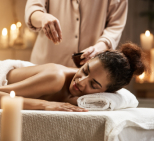- 79 Station Ln, Hornchurch, RM12 6JU
- 01708 607930
- info@charismabeautylounge.co.uk
- Home
- About Us
- Service
- Our Pricing
- Blog
- Contact

LATEST POST

Microblading is a semi-permanent cosmetic tattooing technique that creates natural-looking eyebrows by depositing pigment into the skin. For individuals with oily skin, this procedure can be both a blessing and a challenge due to the skin’s unique characteristics.
Whether you’re seeking fuller brows or a low-maintenance beauty routine, microblading can be transformative. However, oily skin types require special attention to ensure optimal outcomes. This guide covers everything from understanding oily skin to choosing the right artist. By addressing common concerns and providing practical advice, we aim to empower you to make informed decisions. Let’s dive into the world of microblading tailored for oily skin!
Oily skin is characterized by excess sebum production, which gives the skin a shiny or greasy appearance. This skin type often has larger pores and is prone to acne or blackheads, particularly in the T-zone. Sebum, the skin’s natural oil, helps maintain moisture but can complicate cosmetic procedures like microblading. The forehead, where microblading is performed, is often oilier than other areas. Understanding these traits is crucial for predicting how microblading will interact with your skin.
The overproduction of sebum in oily skin can affect the skin’s texture and healing process. It may lead to faster pigment fading or less crisp microblading strokes over time. Additionally, oily skin tends to be thicker, which can influence how pigment is absorbed. External factors like humidity or diet can exacerbate oiliness, impacting results. Knowing these characteristics helps set realistic expectations for microblading outcomes.
Microblading is suitable for oily skin types, but it requires careful consideration and technique adjustments. While the procedure can enhance sparse brows, oily skin may cause pigments to fade faster. Skilled artists can adapt by using specific tools or pigments designed for oilier skin. However, results may vary compared to those with normal or dry skin. Consulting with a professional is key to determining suitability.
Not every oily skin type reacts the same way to microblading, as oil production levels differ. Those with moderately oily skin may achieve better results than those with extremely oily skin. The procedure can still create defined, natural-looking brows with proper care. Pre-treatment assessments help artists tailor the process to your skin’s needs. With the right approach, microblading can be a viable option for oily skin.
Oily skin can have a significant impact on the results of microblading due to its tendency to expel excess oil, which can interfere with how the pigment settles and lasts. If you have oily skin, it’s important to understand the various ways it can affect your microblading experience. While microblading is still possible for those with oily skin, it does present certain challenges that require careful consideration and attention during the procedure and healing process. Here are some key factors to consider:
By understanding how oily skin affects microblading, you can set realistic expectations for the outcome and take the necessary steps to ensure the best possible result. Proper consultation with a skilled and experienced artist, along with consistent aftercare, will help you achieve the most beautiful and long-lasting brows.
Microblading oily skin comes with several challenges, particularly when it comes to achieving long-lasting, crisp results. Oily skin’s natural tendencies can impact both the procedure and the healing process. Here’s a breakdown of the key challenges and how they affect the outcome:
While oily skin can pose challenges for microblading, with the right approach, these hurdles can be managed effectively. By selecting a skilled artist, following the right skin prep and aftercare, and being prepared for more frequent touch-ups, clients can still achieve beautiful, defined brows that last.
Microblading on oily skin carries risks like pigment migration, where ink spreads beyond the intended area. This can result in blurry or uneven brows, especially if the artist uses improper techniques. Oily skin is also more susceptible to infections due to its moist environment. Allergic reactions to pigments, though rare, are another concern. Choosing a qualified artist minimizes these risks significantly.
Another risk is poor pigment retention, leading to disappointing results. Oily skin may reject certain pigments, causing patchy or faded brows over time. Scarring is also a possibility if the skin is overworked during the procedure. Pre-treatment consultations can help identify potential issues early. By understanding these risks, clients can take steps to ensure a safer experience.
Before microblading, a thorough skin assessment is essential for oily skin types. Artists should evaluate oil production levels and skin sensitivity to tailor the procedure. Clients must disclose any skin conditions, like acne or dermatitis, to avoid complications. Patch tests for pigments can prevent allergic reactions. Ensuring the artist follows strict hygiene protocols is also critical.
Preparation is key to minimizing risks for oily skin clients. Avoiding oily skincare products before the procedure helps create a stable canvas. Clients should also refrain from blood-thinning medications to reduce bleeding during microblading. A clean, sterile environment reduces the risk of infections. These precautions help ensure a safe and successful microblading experience.
To achieve better microblading results on oily skin, choose an artist experienced with this skin type. They can use specialized techniques, like shallower strokes, to enhance pigment retention. Opting for high-quality, oil-resistant pigments can also improve longevity. Pre-treatment exfoliation can help create a smoother surface for microblading. These strategies can lead to sharper, more defined brows.
Another tip is to manage oil production before and after the procedure. Using mattifying skincare products can reduce excess sebum during healing. Avoiding heavy makeup or oily foods can also support better outcomes. Regular consultations with your artist ensure the best approach for your skin. With these tips, oily skin clients can achieve stunning results.
Prolonging microblading results on oily skin starts with proper skin preparation. Cleansing the skin thoroughly before the procedure removes excess oil, aiding pigment adhesion. Using oil-controlling serums or primers can help stabilize the skin during healing. Regular touch-ups, typically every 6-12 months, maintain the brows’ appearance. These steps help extend the vibrancy of your microbladed brows.
Aftercare plays a crucial role in prolonging microblading results for oily skin. Avoiding excessive sweating or oily environments prevents premature fading. Applying recommended aftercare products, like healing balms, supports pigment retention. Protecting brows from sun exposure with SPF also extends their lifespan. Consistent care ensures your brows stay defined for longer.
Aftercare for oily skin post-microblading requires diligent oil management. Gently cleansing the brows with a mild, oil-free cleanser prevents buildup that could affect healing. Applying a thin layer of aftercare ointment, as recommended by your artist, promotes recovery. Avoid touching the brows to reduce the risk of infection. Following these steps ensures optimal healing and results.
Oily skin clients should avoid heavy moisturizers or makeup near the brows during recovery. Keeping the area dry and free from sweat or humidity is crucial for pigment retention. Regular check-ins with your artist can address any healing concerns promptly. Sun protection is also vital to prevent fading during the recovery period. Proper aftercare leads to longer-lasting, vibrant brows.
For individuals with oily skin who may be hesitant about microblading, several alternatives can provide beautiful, long-lasting results. These options are designed to address the unique needs of oily skin without compromising on quality. Here’s an overview of some popular alternatives:
These alternatives offer flexibility and can address the specific concerns of clients with oily skin, allowing them to achieve defined brows without the challenges posed by microblading.
Choosing a microblading artist for oily skin requires researching their experience with this skin type. Look for professionals who showcase successful oily skin cases in their portfolio. Reading client reviews can reveal their expertise in handling unique skin challenges. Ensure the artist uses high-quality pigments and sterile equipment. A thorough consultation process indicates a committed and skilled professional.
Ask potential artists about their techniques for managing oily skin during microblading. They should be knowledgeable about adjusting stroke depth and pigment selection. Visiting the studio to assess cleanliness and professionalism is also important. Trust your instincts when evaluating their communication and confidence. Selecting the right artist ensures a safe and satisfying microblading experience.
Microblading can be a game-changer for oily skin types when done correctly. With the right artist and proper care, stunning brows are achievable despite challenges. Understanding your skin’s needs empowers you to make informed decisions. From preparation to aftercare, every step matters for lasting results. Embrace the process to enjoy confident, defined brows.
While oily skin presents unique hurdles, they’re not insurmountable with expert guidance. Advances in techniques and products continue to improve outcomes for oily skin clients. Stay proactive in your research and aftercare to maximize results. Microblading offers a path to low-maintenance beauty for all skin types. With dedication, your brows can look flawless and natural.
Recent Posts




WhatsApp us